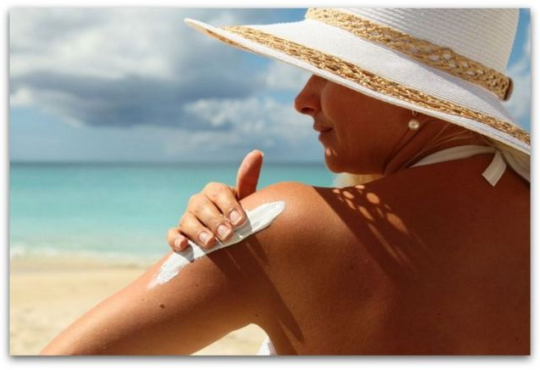NO ONE WILL TELL YOU THIS / The food, creams and medicines you use every day in the summer can wreak havoc on you | Here’s what to avoid in the heat

From celery to hand cream, from perfume to contraception, substances that we ingest daily under the influence of the sun can suddenly become allergens.
Sun allergy is defined as “the absence of a normal skin reaction to ultraviolet radiation. The symptoms often seem so harmless that most people don’t even realize they have a problem.
1. Symptoms of photoallergy
“Allergy to the sun manifests itself on the exposed parts of the body in the form of redness and swelling of the skin, a very small rash that itches. Photosensitizers play a key role in this pathological reaction of the skin – substances that increase the sensitivity of the skin to ultraviolet radiation,” says dermatovenerologist Anna Zhilkina for Mondo.
2. What causes sun allergy
“In photoallergy, exposure to UV rays changes a substance from a drug, food or product ‘into something new that the body then recognizes as a foreign substance and activates the immune system,'” says Dr. Barbara Reed, clinical professor of dermatology at the University of Colorado Hospital. “Photoallergy does not occur at the first exposure, but develops over time. It can take a few days to appear and is usually more of an itchy rash than an excessive sunburn.” If you notice a reaction, consult a doctor.
3. Who is exposed to increased risk
People with certain autoimmune diseases (such as lupus) or acquired conditions such as polymorphic light eruptions (an itchy rash that occurs when exposed to the sun in those who have developed sun sensitivity) are most susceptible to photosensitivity. Those who are normally more sensitive to the sun are also at increased risk.
4. Medications that cause sun allergy
Certain antifungal medications, antihistamines (including diphenhydramine or Benadryl), oral contraceptives, nonsteroidal anti-inflammatory drugs (NSAIDs such as ibuprofen, ketoprofen, and naproxen), antibiotics (including “sulfan” drugs, quinolones, and tetracycline), oral diabetes medications (sulfonylureas ), diuretics and tricyclic antidepressants can cause photosensitivity. The same is true for the herbal preparation St. John’s wort, which is taken for depression, anxiety and PMS.
5. Foods that can cause sun allergy
Celery, dill, fennel, fig, lime, buckwheat, parsley and wild carrots are just some of the foods that can increase sun sensitivity.
6. Perfumes and essential oils that can cause sun allergy
Wearing fragrances like bergamot, bitter orange, lavender, lemongrass, musk, rosemary or sandalwood can make your skin more sensitive to the sun.
7. Skin care products that can cause photosensitivity
Check for ingredients such as alpha-hydroxy acids (AHAs like glycolic acid), beta-hydroxy acids (BHAs like salicylic acid), and tretinoins (like Retin-A). Each of these means removes the outer layer of the skin, the stratum corneum, which makes the skin more sensitive to the sun. “This layer provides some protection from UV radiation, so when it’s gone, the skin is more sensitive to the sun,” says Reid. Additionally, the chemical benzoyl peroxide, found in many over-the-counter acne products, can cause photosensitivity.
8. Be careful with symptoms
Photosensitivity reactions are not universal. In other words, not everyone who takes a certain medication or uses a certain product will experience photosensitivity, notes D’Anne Kleinsmith, MD, a dermatologist in private practice in West Bloomfield. Even if you have a photosensitivity reaction once, it does not guarantee that you will again or every time you use or ingest that substance. The reverse is also true – the fact that you passed without a reaction does not mean that you will pass the next time.
9. How to prevent sun allergy
If you’re ingesting any photosensitizing ingredients through food, medication, or cosmetics, “you should try to do outdoor activities in the early morning or late afternoon,” says Kleinsmith. Also, take extra precautions before sun exposure: Choose a waterproof sunscreen that protects against the sun’s UVA and UVB rays (look for the words “broad spectrum”). “Creams and lotions work better than sprays,” advises Kleinsmith.







